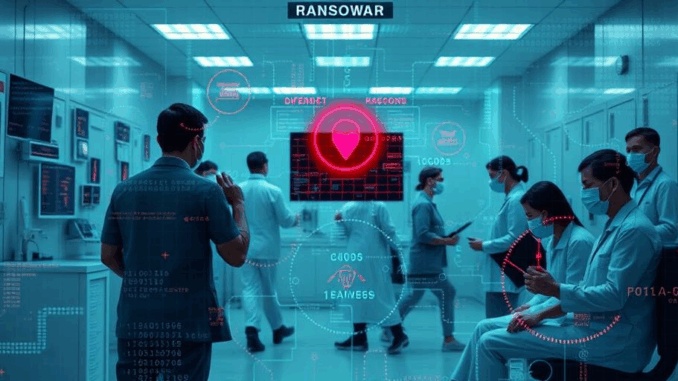
Summary
The Change Healthcare ransomware attack, impacting 100 million individuals, has incurred costs exceeding $2.457 billion for UnitedHealth Group. The attack disrupted healthcare operations nationwide, causing financial and patient care delays. This incident underscores the urgent need for robust cybersecurity measures in the healthcare sector.
Explore the data solution with built-in protection against ransomware TrueNAS.
** Main Story**
Okay, so let’s talk about the Change Healthcare ransomware attack from February 2024. It was a mess, right? The ALPHV/BlackCat group really threw a wrench into the US healthcare system. They didn’t just encrypt files, they snagged data on something like 100 million people. I mean, that’s a mega-breach if I ever saw one. And, of course, it led to some serious financial hits, operational headaches, and, you know, the inevitable legal battles. No one wants that.
Financial Fallout: A Multi-Billion Dollar Crisis
The money side of things? Absolutely bonkers. Initially, UnitedHealth Group (UHG) thought they were looking at $1.6 billion in losses. But by Q3 2024? That number had already jumped to over $2.457 billion! And projections for the year now sit at around $2.87 billion. Crazy. That includes the costs of actually dealing with the attack, like getting systems back up and running, plus those legal fees. And let’s not forget the business disruption and lost revenue, the stuff that doesn’t always get the headlines.
And, get this, UHG offered over $8.5 billion in interest-free loans to providers who were struggling after the attack. As of October 2024, about $3.2 billion had been paid back. It was supposed to help keep everyone afloat, you know? So many places couldn’t even submit claims correctly, it was a disaster.
Operational Disruptions and Patient Care Impacts
The operational side was just as bad. Change Healthcare’s systems are critical for claims processing and, well, basically keeping the healthcare system humming along. When those systems went down, thousands of hospitals and clinics felt the pain. Think about it, that’s a lot of potential patients in the dark about their healthcare.
This meant delays in patient care, like getting approvals for procedures and prescriptions. Can you imagine needing urgent treatment and being held up by a system outage? An American Hospital Association (AHA) survey found that 74% of hospitals saw direct impacts on patient care, and 94% took a financial hit. Seriously! Some providers had to use their own money to stay afloat and were even staring down insolvency. And patients? Well, they faced treatment delays, confusion about their insurance, and the constant worry of their data being compromised. Talk about a stressful situation.
Legal and Regulatory Scrutiny
Speaking of stress, the lawsuits started flying, naturally. Change Healthcare is now dealing with a class-action lawsuit, bringing together claims from individuals and providers. Plus, regulatory bodies like the Department of Health and Human Services (HHS) are investigating, asking tough questions about data security and HIPAA compliance. The breach exposed sensitive info like names, addresses, Social Security numbers, and medical records. It really highlights the huge need for better cybersecurity in healthcare. It’s not just about avoiding fines, you know? It’s about protecting people’s privacy, and ultimately the bottom line.
Ransomware and the Changing Cybersecurity Landscape
This whole thing is a sign of the times, really. Ransomware attacks are getting more sophisticated. Even though Change Healthcare reportedly paid $22 million to ALPHV/BlackCat, the group supposedly didn’t even delete the stolen data. Can you believe that? Talk about a kick in the teeth. Now, apparently, the data ended up with another ransomware group, RansomHub, which wanted another ransom. It’s that double extortion tactic everyone’s talking about, where they steal your data before they encrypt it. It puts organizations in such a tough spot. But, paying the ransom isn’t a guarantee anything gets resolved.
Lessons Learned and the Path Forward
So, what’s the takeaway here? It’s a wake-up call. The healthcare industry is interconnected, and relying on a single vendor for critical services can have devastating consequences. We need stronger cybersecurity defenses, like multi-factor authentication and regular security assessments. Incident response plans are crucial, too. I mean, when was the last time you tested yours?
Also, data backups and recovery plans are essential. Thinking back to when my company’s backup system failed, I remember being up all night with a team, we eventually got it working, but it’s something I’ve never taken for granted since. We also need better collaboration between healthcare providers, government agencies, and cybersecurity experts. We’re all in this together. As of today, April 21, 2025, this incident is still a reminder of the ever-present cyber threats, it shows the importance of proactive security to safeguard sensitive data and ensuring services continue. You could almost say that it’s non-negotiable these days.


So, $22 million paid and the data *still* leaked? Did they at least get a loyalty card for that kind of spend? Asking for a friend…who’s a healthcare provider. Hypothetically.
That’s a great point! A loyalty card would be the least they could do, right? It really highlights the ineffectiveness of simply paying ransoms. It’s a reminder that a proactive approach to cybersecurity, like robust data protection and incident response planning, is crucial for protecting sensitive information.
Editor: StorageTech.News
Thank you to our Sponsor Esdebe
$2.457 billion *so far*? Does that include hazard pay for the IT team working weekends to clean up this mess? Asking for… well, me. I might need a new job after I suggest we start paying in Bitcoin to confuse the hackers.
That’s a hilarious idea about paying in Bitcoin! It might confuse them long enough for the IT team to catch a break. I imagine the actual hazard pay for the IT team is a lot of pizza and energy drinks, hope they get some well deserved rest afterwards. It really highlights the pressure these teams face during crises.
Editor: StorageTech.News
Thank you to our Sponsor Esdebe